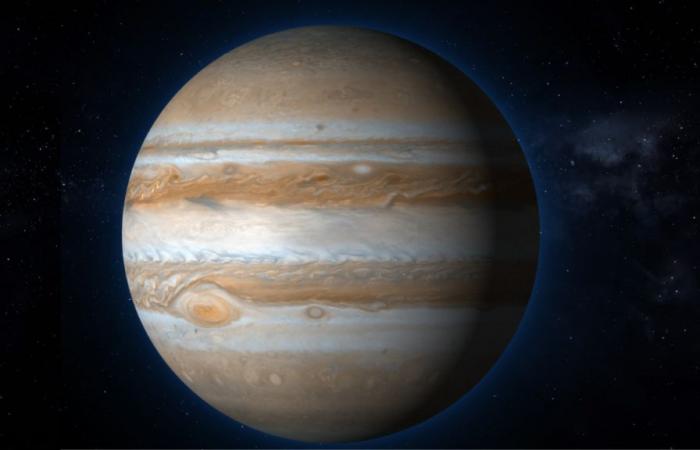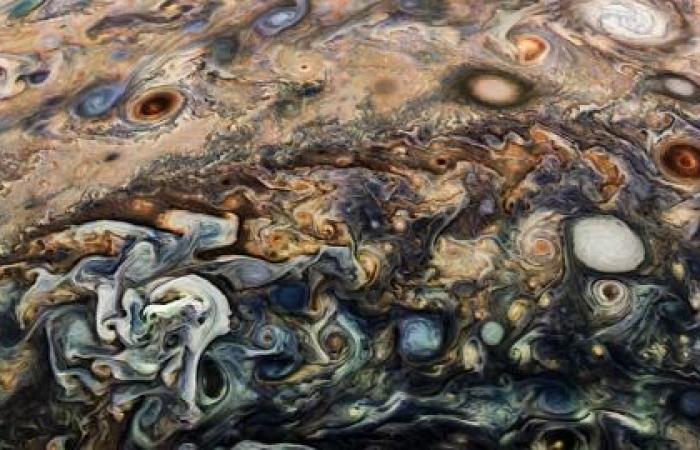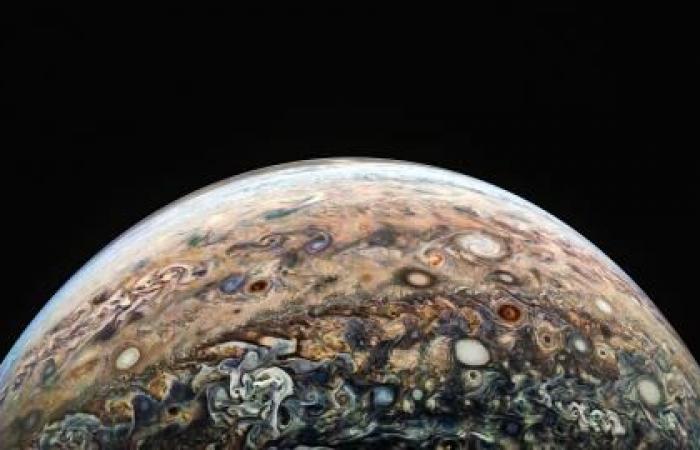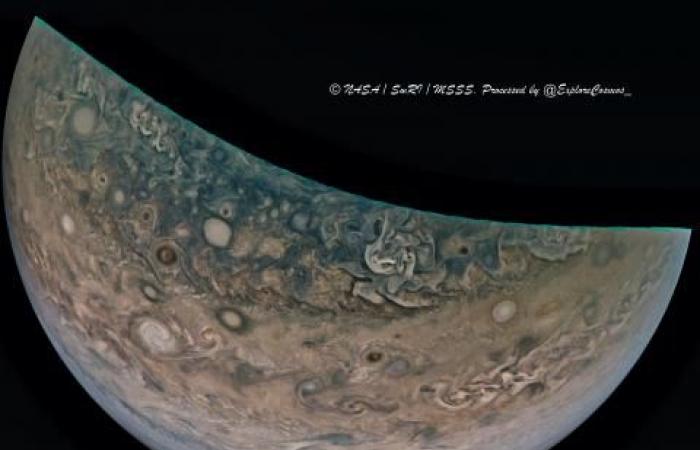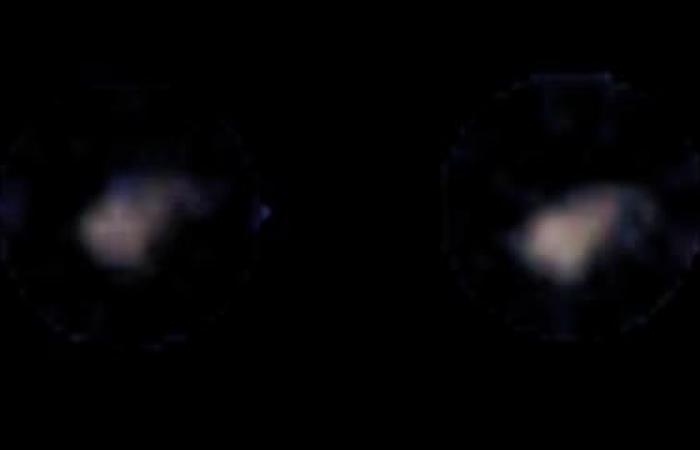Well behind the orbit of Mars, at least 591 million kilometers from Earth, lies a giant: Jupiter. Eleven times the diameter of the Earth, 318 times its mass and having 95 moons, the gas giant, fifth planet from the Sun, named in reference to the king of the Roman gods has no equal in the Solar System. Raising several questions, particularly with regard to its Great Red Spot, but also concerning its moons, the planet has been flown over since 2016 by NASA’s Juno probe.
Recently, during its 66th flyby of the planet, on October 23, 2024, the spacecraft gave us incredible new photos of Jupiter, as well as one of its moons: Almathea.
Jupiter reveals itself in a new light
If you were asked, using felt-tip pens or colored pencils, to represent Jupiter, you would surely make it round, large, with white, yellow and red bands and a circle to represent the largest storm in the System solar.
Like this:
crédit photo : Think_About_Life – SHUTTERSTOCK
However, looking at the new photos captured by Juno in October 2024, you should add a few colors to your palette. Look instead:
credit photo : NASA / JPL / SwRI / MSSS / Gerald Eichstädt / Thomas Thomopoulos © CC BY
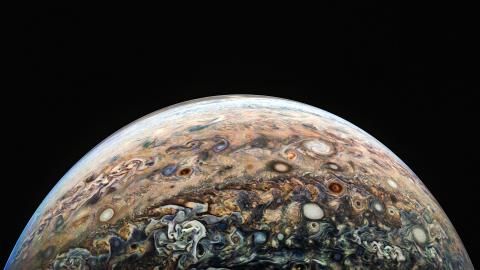
credit photo : NASA / JPL / SwRI / MSSS / Gerald Eichstädt / Thomas Thomopoulos ©CC BY
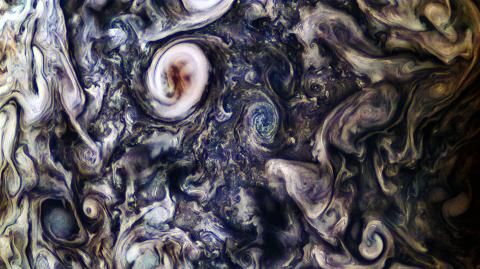 credit photo : NASA / JPL / SwRI / MSSS / Gerald Eichstädt / Thomas Thomopoulos © CC BY
credit photo : NASA / JPL / SwRI / MSSS / Gerald Eichstädt / Thomas Thomopoulos © CC BY 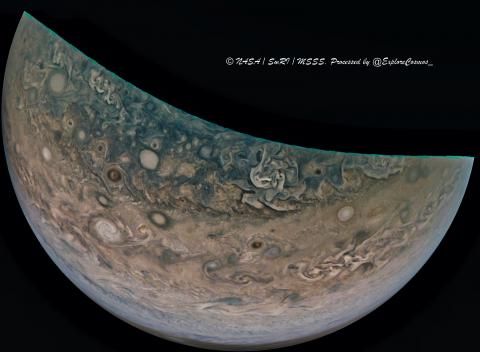
photo credit : NASA / SwRI / MSSS
These photos, posted on the Juno mission website, are not the original photos captured by the Juno probe. They have, in fact, been processed in such a way as to bring out the colors of the planet by citizen scientists.
Almathea, a small Jovian moon also captured
The moons of Jupiter are among the best-known stars in the Solar System. You have surely heard of Io, Callisto, Europa or Ganymede. But unless you are a Jovian satellite enthusiast, it is not certain that you know Almathea.
However, behind the four very well-known and larger ones, this moon of Jupiter, named in reference to a naiad who would have breastfed the king of the gods, is one of the largest known satellites on the planet with Thebe, Metis and Adrastea.
Orbiting 181,400 kilometers from Jupiter, Amalthea is a very small moon with a radius of only 84 kilometers, or 168 kilometers. Which is ridiculously small compared to its mother planet or even our own natural satellite whose radius is 1737.4 kilometers.
Captured in image by the Juno probe on October 23, 2024, this moon was discovered in 1892.
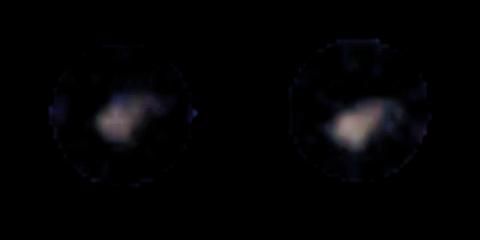
credit photo: NASA / JPL / SwRI / MSSS / Gerald Eichstädt
Life next to the gas giant?
Although Jupiter is a gas planet, which unlike terrestrial planets, does not have a surface, its moons do have one. One of them: Europe is even a major point of interest for scientists and perhaps even for Humanity.
Indeed, on October 14, 2024, the space probe Europa Clipper set off from Earth towards the Jovian moon to find out whether or not it could potentially gather the conditions necessary for the establishment of life. The probe will therefore set out to probe Jupiter’s moon with the idea of knowing whether the ocean of liquid water located under the frozen surface could even shelter forms of life.
Having left barely a month ago, the space probe is currently on its way to the gas giant. According to NASA’s forecast schedule, it should begin its scientific mission in 2031.
Source : Space
Belgium

